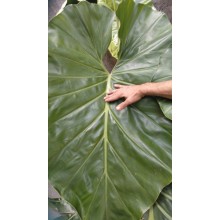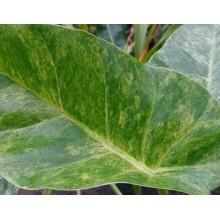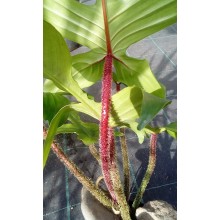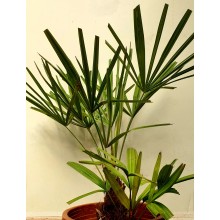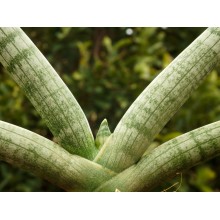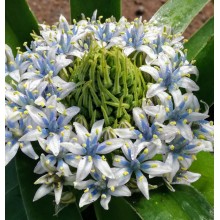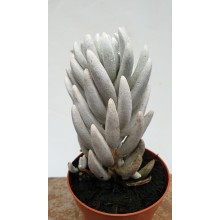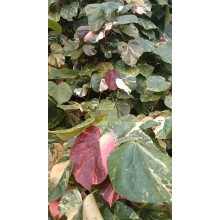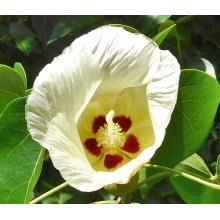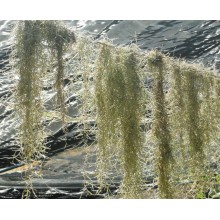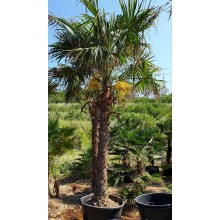Spécial Il y a 77 produits.

Sur canarius.com, nous essayons de repousser les limites du domaine de la botanique. Sur notre boutique en ligne, nous tentons de facilité le processus achat/vente des plantes partout dans le monde. C’est pourquoi, nous cultivons les espèces les plus communes ainsi que les plantes les plus spéciales, comme nous pouvons le voir dans cette section.
Sous-catégories
-
Plantes résistantes au froid
Voici notre sélection de plantes qui peuvent supporter un certain froid. Certaines ne vont pas résister au froid et supporteront un gel léger, mais d'autres supporteront bien les gelée dans les climats froids. Elles sont tous très différentes mais méritent d'être essayées parce que tous ces plantes tropicales ont des exigences non tropicales. Elles vont sûrement prospérer en extérieur dans des climats méditerranéens côtiers ou dans une serre chauffée légèrement où le gel ne passera pas.
-
Plantes insolites
Ceci est notre sélection de plantes extraordinaires. Elles sont tous très différente et quelque peu insolites. Il y a des airplants, des bananes rouges, des pierres vivantes, les plantes à feuilles noires, des cactus zig-zag et tous les types de plantes accrocheuses et des morceaux de conversation. -
Plantes panachées
Les Plantes panachées ont des feuilles rayées ou tachetées de couleurs attrayantes. La "variegation" des plantes se produit pour de nombreuses raisons. Le plus souvent, cela est dû a une erreur génétique qui apparaît de temps en temps dans la nature. Un panaché blanc est le résultat de l'incapacité d'une plante à produire de tout pigment dans cet endroit. Une production moindre de la chlorophylle pigment permettra de faire apparaitre de l'orange, jaune et vert lumineux apparaissent, ou même des nuances de rose, rouge et violet. Ces plantes sont plus lentes à pousser que leurs cousines vertes et souvent plus coûteuses. Nous offrons des Agaves, Aspidistras, broméliacées et beaucoup de plantes succulentes panachées.
-
Plantes résistantes à la sécheresse
Dans cette section, nous avons rassemblé toutes ces plantes qui sont adaptées aux conditions arides ou sèches. Normalement, la majorité de ces espèces, qui poussent dans des environnements secs, sont cireuses, succulents, feuillues, collantes, à épines et même plus petites que le reste.
Parmi les plantes résistantes à la sécheresse, vous pouvez retrouver plusieurs espèces comme: le Pithecellobium doux, la Ruta graveolens, le Syzygium cordatum, le Tamarindus indica et bien d’autres.
-
Philodendron camposportoanum
Philodendron camposportoanum
Small creeping-climbing Philodendron with leaves of changing colours. It is native to Northern South America and it is chiefly a creeper.
43,00 € -
Philodendron giganteum
Philodendron giganteum
Giant leaved aroid with glossy deep green leaves - one of the simplest and most beautilful of all. It slowly climbs on huge trees but it can be kept low and it will creep on the ground. It loves hot and wet conditions but it is adaptable to harsher, sunny seaside locations.
109,20 € 156,00 €Prix réduit ! -
Philodendron giganteum 'Marble'
Philodendron giganteum 'Marble'
This is a top class ornamental for tropical gardens and settings. This showy variegated clone of Philodendron giganteum is reminiscent of the old good "pothos", Epipremnum aureum, because they have a similar variegation pattern, but the size of this is enormous.
122,00 € 192,00 €Prix réduit ! -
Philodendron microstictum
Philodendron microstictum
Small climbing Philodendron from Costa Rica, with glossy leaves, often showing a shape of perfect hearts. This species will grow well on a totem.
34,00 € -
Philodendron pedatum 'Quercifolium'
Philodendron pedatum 'Quercifolium'
This philo with excitingly thin pinnate foliage is possibly a clone of the variable species Philodendron pedatum, selected for the particularly narrow lobes.
36,20 € -
Philodendron reneauxii
Philodendron reneauxii
This is a rather different-looking, frost-tolerant Philodendron with oval leaves held on tall petioles. The stem creeps on the ground and does not like to climb. Leaf stalks grow vertically to 30-60 cm, holding leathery glossy leaves. Philodendron reneauxii is uncommon in collections, but it is a winner in cool to cold conditions.
34,20 € -
Philodendron x 'BGB' - Big Glorious Bastard
Philodendron x 'BGB' - Big Glorious Bastard
This is a hybrid climbing Philodendron, with exciting leaves. BGB is a fancy name meaning Big Glorious Bastard (with a mix of references to its hybrid origin,to its P. gloriosum parent and to the movie "Inglorious bastards" It is a cross of Philodendron gloriosum and Philodendron giganteum.
70,00 € -
Rhapidophyllum hystrix - Specimen
Rhapidophyllum hystrix - Specimen
8 years old, branched. h= 80 cm - Son h= 35 cm. The needle palm is the cold-hardiest of all palms. It is a clumping, short fan palm, with fibrous trunks, armed with long dark spines. Leaves are dark green and glossy.
288,00 € -
Sansevieria cylindrica var. patula
Sansevieria cylindrica var. patula
Patula is the most compact variety of the popular Sansevieria cylindrica. Leaves are cute and chubby, silvery and banded in high light. Solitary plants often resemble a chubby human hand !
18,30 € -
Scilla sicula
Scilla sicula
The Sicilian Squill (Scilla sicula) is a bulbous herbaceous perennial (geophyte) with smooth elongate leaves pointed at the tip. It is distinguished by pale flowers and broad, marginally ciliate leaves (with a line of short, white hairs).
34,00 € -
Senecio haworthii 'Mont Blanc'
Senecio haworthii 'Mont Blanc'
This all-white wooly Senecio is native to the Little Karroo of South Africa. It is easy to grow and makes a nice small shrub with vertical branches. Senecio haworthii is renown for its cold hardiness as it takes short frosts to -6 C. 'Mont Blanc' is a select clone which is a stouter and whiter than the typical species.
10,20 € -
Talipariti tiliaceum 'Variegata'
Talipariti tiliaceum 'Variegata'
This striking variegated variety of Talipariti tiliaceum has large, multicolored leaves streaked with splashes of green and cream. Some leaves even turn a deep maroon color.
46,00 € -
Thespesia populnea
Thespesia populnea
Small tree in the mallow family which is resistant to drought, wind and seaside conditions.
42,00 € -
Tillandsia usneoides - Spanish Moss, Airplant
Tillandsia usneoides - Spanish Moss, Airplant
A moss-like plant not related to mosses at all. Spanish Moss grows on trees in America, with no roots at all. It is Gray when dry and light green when wet, it hangs from tree branches and grows easily. This "Air Plant" can take short freezes to about -6 C.
19,00 € -
Trachycarpus latisectus - ADULT! 195cm trunk
Trachycarpus latisectus - ADULT! 195cm trunk
Trachycarpus latisectus is one of the most attractive palms in this frost-hardy genus. Its leaves have exceptionally wide segments and a thick, ringed trunk, coated with reddish-brown fibers when young. We offer some fantastic tall adult specimes which are seldom found in Europe.
948,00 €
Pour le moment, il ya peu de produits dans cette catégorie Spécial























